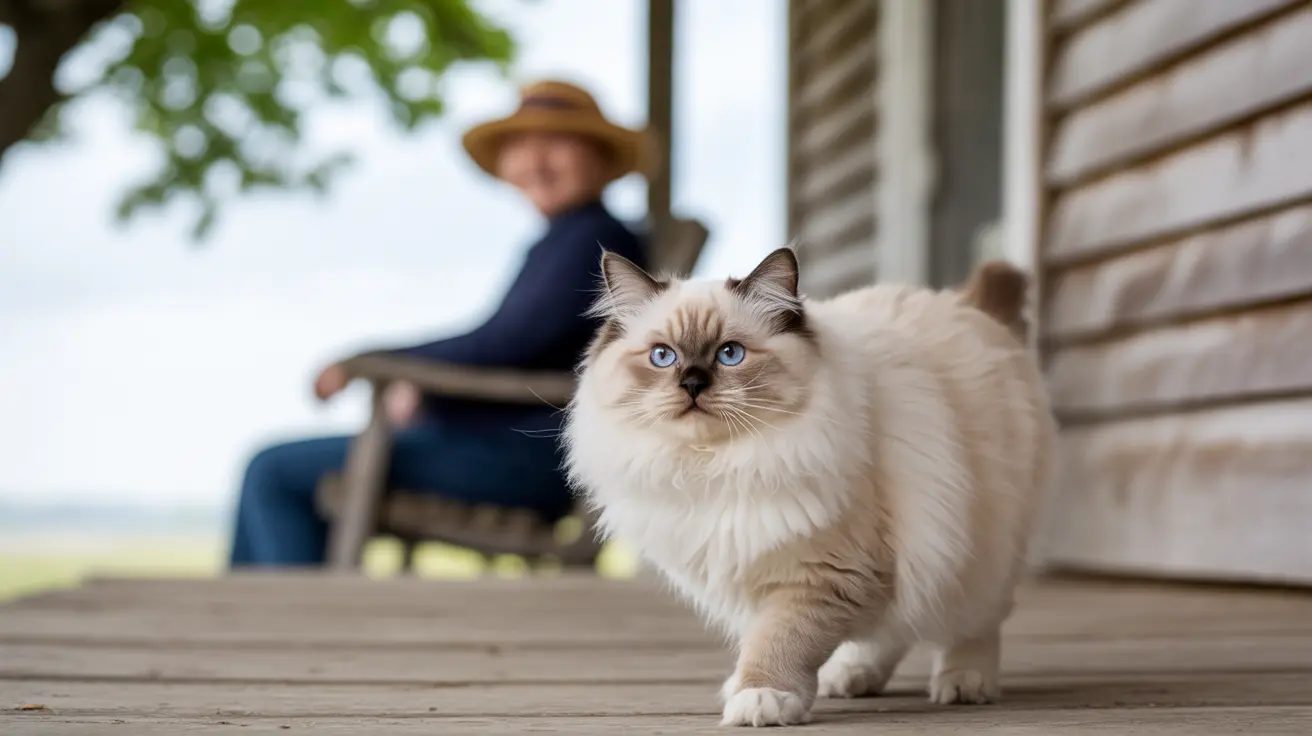Physical Appearance Clues
A stray cat's appearance often provides the first hints about its status. Unlike well-maintained outdoor cats, strays typically show signs of neglect:
- Unkempt or matted fur
- Visible weight loss or malnutrition
- Untreated wounds or infections
- Dirty or rough-looking coat
- Possible signs of past grooming or care
However, recently lost cats might still appear well-groomed, so appearance alone isn't definitive.
Behavioral Indicators
The way a cat interacts with humans and its environment can reveal its background:
Social Behavior
- Approaches people, though possibly cautiously
- Responds to human voices or movement
- May meow or vocalize for attention
- Shows interest in human activities
Territory and Movement
- Appears disoriented or uncertain
- Stays in one area, often near houses
- May hide under porches or in bushes
- Might approach homes during feeding times
Time and Location Patterns
Observing when and where you see the cat can provide valuable clues:
- Regular appearance at specific times (especially meal times)
- Lingering near residential areas
- Seeking shelter in inappropriate places
- Appearing lost or out of place
Assessment Tools and Techniques
Physical Assessment
- Check for a collar or microchip
- Look for an ear-tip (indicating TNR program participation)
- Observe overall health and condition
- Notice any signs of recent veterinary care
Behavioral Tests
- Try gentle calling or clicking sounds
- Offer food from a safe distance
- Watch for responses to household noises
- Observe interaction with other cats
Next Steps for Helping a Stray
If you've identified a likely stray cat, consider these actions:
- Document the cat's presence with photos
- Check for local lost cat reports
- Put up "found cat" notices
- Contact local shelters and rescue organizations
- Consider setting up a feeding station
- Plan for possible TNR if the cat proves feral
Frequently Asked Questions
How can I tell if a cat I see outdoors is a stray and not feral or owned?
Look for signs of previous domestication like approaching humans, responding to voices, or showing interest in human activity. Strays may appear unkempt but still display social behaviors unlike feral cats.
What behavioral signs indicate that an outdoor cat used to be a pet but is now stray?
Stray cats often meow for attention, approach people (though cautiously), and show familiarity with human environments. They may respond to feeding calls or show interest in houses and human activity.
Are there physical clues like ear-tipping or collar presence that help identify a stray cat?
The absence of a collar doesn't necessarily indicate a stray, but an ear-tip definitely indicates a cat has gone through a TNR program. Look for signs of previous grooming or care, even if the cat appears currently unkempt.
How should I safely approach or help a cat I suspect to be a stray?
Approach slowly and calmly, avoiding direct eye contact. Offer food from a distance and gradually decrease the distance over time. Never chase or corner the cat, and contact local rescue organizations for assistance if needed.
What are the differences in vocalization and body language between stray and feral cats?
Stray cats are more likely to meow, make eye contact, and display a raised tail when approaching. Feral cats typically remain silent, avoid eye contact, and maintain a low, defensive posture around humans.






